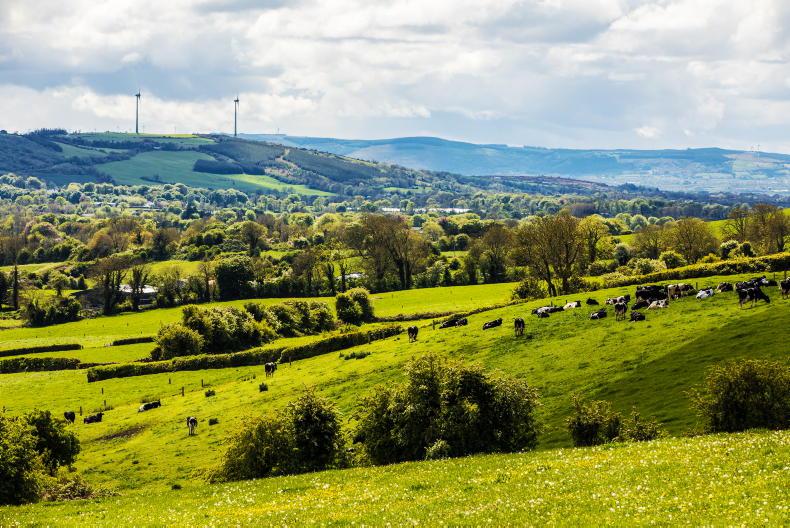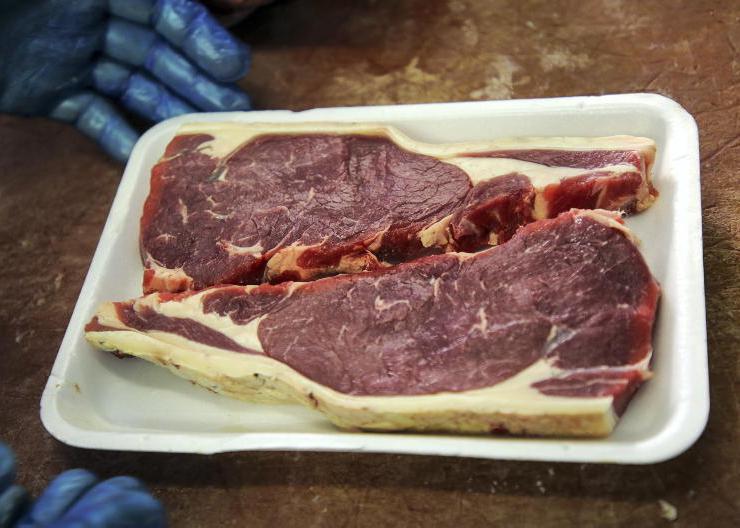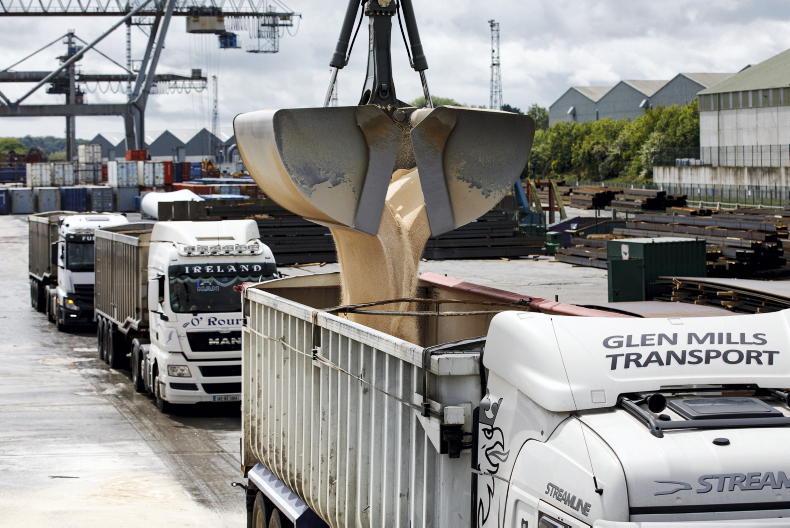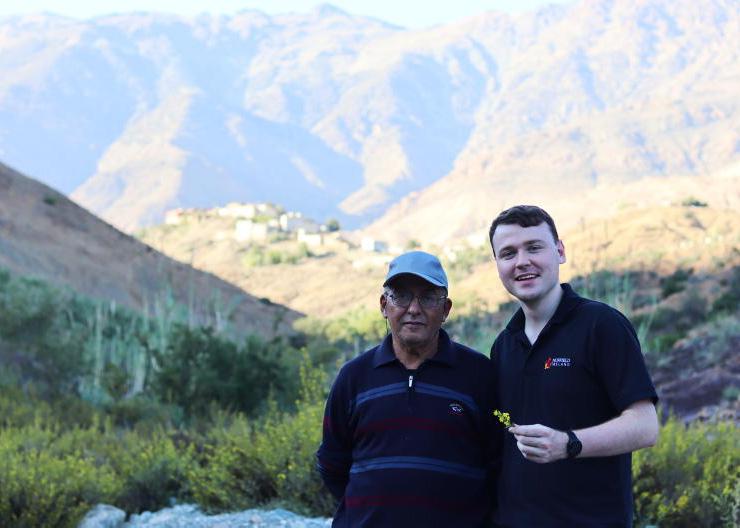The Co-Operation entry route for the Agri-Environment Climate Measure (AECM) continues to generate high levels of discussion among farmers, with many questions raised concerning the recently released priority areas.
This in turn is giving rise to questions on how farmers outside of these areas can gain entry to the AECM.
The individual entry route, or what is being termed AECM General, will cater for farmers outside of the high-priority geographical areas defined for the AECM Co-Operation route and has a target of 30,000 farmers.
Those participating will sign up to a five-year contract, with the CAP Strategic Plan 2023-2027 also including the option for an additional year if required under transitional arrangements until any subsequent CAP plan is put in place.
The AECM General will open for applications in 2023 and it is expected that participants will be accepted across two tranches.
Given the high level of interest in agri-environment schemes, with close to 50,000 farmers participating in the Green Low-Carbon Agri-Environment Scheme (GLAS) and over 10,000 initial applications to the Results-Based Environment-Agri Pilot (REAP), it is probable that interest in the AECM will exceed the 50,000 places available.
Therefore, a ranking and selection process will be used, with applications also given a different priority standing depending on what environmental assets are present on the farm or the type and scale of the farming enterprise.
In this regard there is a tiered entry route with applications entered under three tiers as follows.
The three tiers for the AECM General are:
Tier 1 – Farmers with identified Priority Environmental Assets (PEAs) who must undertake mandatory actions associated with those assets; those with certain rare breeds, and those who are registered organic farmers.Tier 2 – Farmers above a certain stocking rate or a certain area under arable crops or whose lands include a vulnerable water area, who must undertake certain appropriate actions, or farmers participating in certain forestry schemes or who opt for one of the tree planting actions.Tier 3 – All other farmers who undertake a range of appropriate actions, selected from a list of general actions, to address local/farm specific environmental priorities, with actions selected following the completion of a sustainable farm plan.Tier 1 Priority Environmental Assets
Farmers with Priority Environmental Assets (PEAs) will get priority access in to the scheme in each tranche.
If, however, the number of applicants in Tier 1 exceeds the number of places available in that tranche then a scoring matrix and ranking and selection process will apply.
Where PEAs are present on a farm, this must be indicated in the farm sustainability plan which will be drawn up for each holding by an approved adviser.
To gain priority entry under Tier 1, an applicant must also commit to completing any or all mandatory actions relevant to the PEA. The PEAs under Tier 1 and the associated mandatory actions are listed as follows:
Private Natura (low-input grassland scorecard action as deemed appropriate by adviser).Commonage land (results-based commonage scorecard will apply).Geese and swans area (geese and swans action). Breeding wader mapped areas (low-input grassland scorecard action as deemed appropriate by adviser).Catchments identified as having high status water objective (EPA designated) (no mandatory action, but actions appropriate to local needs, identified in the farm sustainability plan). Conservation of rare breeds (results based).
Irish Moiled cow and calf.
Registered organic farmers will also qualify for priority access under Tier 1. However, if they have PEAs on their farm the appropriate action(s) from the list above must be undertaken. The CAP document states that commitments undertaken under the Organic Farming Scheme may qualify for an adjusted payment under the AECM as actions cannot be paid on under two different interventions.
Likewise, all actions contained in the AECM will go beyond the requirements of conditionality and eco schemes for the same reason. Organic scheme participants will also have the same options as all other AECM participants of selecting general actions.
The CAP document outlines that Tier 1 is vital in terms of targeting priority environmental assets on a farm which is not located in the priority areas outlined in the AECM Co-Operation entry route. It will focus on safeguarding sensitive landscapes such as Natura and commonage lands, protection of priority water areas as identified by the Environmental Protection Agency and conservation of rare breeds.
Geese and swans
This action promotes the production of a grass sward, to protect, not disturb, and to feed overwintering geese and swans including the Whooper Swan, Greenland White Front Goose, Barnacle Goose and Brent Goose. Ireland hosts a significant proportion of the European populations of geese and swans. Many of which are red and amber listed in terms of conservation. Without intervention, local populations face ?distubance.
Tier 2 entry actions target farmers with higher stocking rates, a certain area of arable lands or a vulnerable water source.
Similar to Tier 1, these elements will have mandatory associated actions that must be undertaken.
There will also be priority given under this tier to farmers participating in certain forestry schemes or proposing to undertake a tree planting action. The main aspects of this tier are:
Vulnerable water area
This is the first area highlighted and farms located in such areas will be required to complete actions deemed as appropriate by an adviser to address any pressures which may affect water quality.
Forestry schemes and tree planting
Applicants participating in the Native Woodland Establishment Scheme or GPC 11 – Agro Forestry will be considered under Tier 2.
An applicant will also be considered under Tier 2 if they commit to one of the following tree planting measures:
Planting trees in rows, groups or parkland.Planting trees in riparian buffers. Planting a tree belt for ammonia capture at farmyard.High stocking rate and arable areas:
In the absence of a vulnerable water area, an applicant’s holding may be considered under Tier 1 if:
A beef, dairy or sheep enterprise has a whole farm stocking rate exceeding 130kg organic nitrogen production per hectare; or has more than 30ha of arable crops. These two farming systems will be considered Tier 2 if they commit to adopting one of the following mandatory actions:
Minimum tillage. Catch crops. Over winter stubble. Grass margins arable or grass margins grassland. Low-input peat grassland.
Arable margins will increase the selection status of tillage farmers. \ Barry Cronin
The low-input peat grassland action is a new action which has not previously been seen. It is a results-based measure for grassland or organic peat soils and its objective is to incentivise a farmer to manage these areas extensively and retain high water levels.
Payment levels will be based on habitat quality and aspects such as sward structure, positive indicator species and damaging activity.
This is the lowest-priority entry of the three tiers and it is likely the one where a scoring matrix and ranking and selection process will mostly come in to play. In completing a farm sustainability plan, a farmer and their adviser must select from a range of general actions which have been designed with the objective of contributing to environmental and climate challenges. The scoring and selection process, when available, is likely to determine which actions farmers opt to select.
The general actions under Tier 3 are listed below.
Farmers participating in Tiers 1 and 2 may also opt to undertake a range of actions to increase the level of potential payment.
Actions suitable for arable land/temporary grassland:
Winter bird food (margin or whole field). Unharvested cereal headlands. Over winter stubble. Grass margins – arable. Environmental management of arable fallow. Minimum tillage (min-till). Catch crops. Brassica fodder stubble.Actions suitable for grassland
Low-input grassland (results-based). Grass margins - grassland. Extensively grazed permanent pasture.Actions suitable for intensive grassland >130 kg organic N/ha.
Ryegrass seed set for birds. Management of intensive grassland next to a watercourse. Brassica fodder stubble (also on arable or mixed farms).Actions suitable for farms with a whole farm stocking rate less than 100kg organic nitrogen/ha
Low-emission slurry spreading.Field boundary actions. Hedgerow rejuvenation coppicing. Hedgerow rejuvenation laying. Traditional dry stone wall maintenance. Planting new hedgerow.Tree planting actions
Planting trees – in rows, groups, or parkland. Planting trees in riparian buffers. Tree belt for ammonia capture at farmyard.Resource protection
Riparian buffer strip – arable/grassland. Riparian buffer zone - arable/grassland. Low-input peat grassland.Conservation of heritage and genetic resources. Protection and maintenance of archaeological monuments.Conservation of rare breeds (results-based). Planting a traditional orchard. 
Tree planting and riparian margins also feature strongly.
Species specific
Barn owl box.Payment rates
The level of payment will be influenced by the type and number of actions an applicant opts to undertake and also through four results-based measures. The overall maximum payment possible is listed as €7,311 per year with the average payment expected to be in the region of €5,000. The four actions which have a variable rate of payment and the maximum level of payment are as follows:
Commonage: €220/ha.Results-based low-input grassland: €450/ha for score of 10.Results-based low-Input peat grassland: €450/ha for score of 10.Protection of rare breeds – an additional €75 payable for each live offspring born and registered during duration of contract.
The Co-Operation entry route for the Agri-Environment Climate Measure (AECM) continues to generate high levels of discussion among farmers, with many questions raised concerning the recently released priority areas.
This in turn is giving rise to questions on how farmers outside of these areas can gain entry to the AECM.
The individual entry route, or what is being termed AECM General, will cater for farmers outside of the high-priority geographical areas defined for the AECM Co-Operation route and has a target of 30,000 farmers.
Those participating will sign up to a five-year contract, with the CAP Strategic Plan 2023-2027 also including the option for an additional year if required under transitional arrangements until any subsequent CAP plan is put in place.
The AECM General will open for applications in 2023 and it is expected that participants will be accepted across two tranches.
Given the high level of interest in agri-environment schemes, with close to 50,000 farmers participating in the Green Low-Carbon Agri-Environment Scheme (GLAS) and over 10,000 initial applications to the Results-Based Environment-Agri Pilot (REAP), it is probable that interest in the AECM will exceed the 50,000 places available.
Therefore, a ranking and selection process will be used, with applications also given a different priority standing depending on what environmental assets are present on the farm or the type and scale of the farming enterprise.
In this regard there is a tiered entry route with applications entered under three tiers as follows.
The three tiers for the AECM General are:
Tier 1 – Farmers with identified Priority Environmental Assets (PEAs) who must undertake mandatory actions associated with those assets; those with certain rare breeds, and those who are registered organic farmers.Tier 2 – Farmers above a certain stocking rate or a certain area under arable crops or whose lands include a vulnerable water area, who must undertake certain appropriate actions, or farmers participating in certain forestry schemes or who opt for one of the tree planting actions.Tier 3 – All other farmers who undertake a range of appropriate actions, selected from a list of general actions, to address local/farm specific environmental priorities, with actions selected following the completion of a sustainable farm plan.Tier 1 Priority Environmental Assets
Farmers with Priority Environmental Assets (PEAs) will get priority access in to the scheme in each tranche.
If, however, the number of applicants in Tier 1 exceeds the number of places available in that tranche then a scoring matrix and ranking and selection process will apply.
Where PEAs are present on a farm, this must be indicated in the farm sustainability plan which will be drawn up for each holding by an approved adviser.
To gain priority entry under Tier 1, an applicant must also commit to completing any or all mandatory actions relevant to the PEA. The PEAs under Tier 1 and the associated mandatory actions are listed as follows:
Private Natura (low-input grassland scorecard action as deemed appropriate by adviser).Commonage land (results-based commonage scorecard will apply).Geese and swans area (geese and swans action). Breeding wader mapped areas (low-input grassland scorecard action as deemed appropriate by adviser).Catchments identified as having high status water objective (EPA designated) (no mandatory action, but actions appropriate to local needs, identified in the farm sustainability plan). Conservation of rare breeds (results based).
Irish Moiled cow and calf.
Registered organic farmers will also qualify for priority access under Tier 1. However, if they have PEAs on their farm the appropriate action(s) from the list above must be undertaken. The CAP document states that commitments undertaken under the Organic Farming Scheme may qualify for an adjusted payment under the AECM as actions cannot be paid on under two different interventions.
Likewise, all actions contained in the AECM will go beyond the requirements of conditionality and eco schemes for the same reason. Organic scheme participants will also have the same options as all other AECM participants of selecting general actions.
The CAP document outlines that Tier 1 is vital in terms of targeting priority environmental assets on a farm which is not located in the priority areas outlined in the AECM Co-Operation entry route. It will focus on safeguarding sensitive landscapes such as Natura and commonage lands, protection of priority water areas as identified by the Environmental Protection Agency and conservation of rare breeds.
Geese and swans
This action promotes the production of a grass sward, to protect, not disturb, and to feed overwintering geese and swans including the Whooper Swan, Greenland White Front Goose, Barnacle Goose and Brent Goose. Ireland hosts a significant proportion of the European populations of geese and swans. Many of which are red and amber listed in terms of conservation. Without intervention, local populations face ?distubance.
Tier 2 entry actions target farmers with higher stocking rates, a certain area of arable lands or a vulnerable water source.
Similar to Tier 1, these elements will have mandatory associated actions that must be undertaken.
There will also be priority given under this tier to farmers participating in certain forestry schemes or proposing to undertake a tree planting action. The main aspects of this tier are:
Vulnerable water area
This is the first area highlighted and farms located in such areas will be required to complete actions deemed as appropriate by an adviser to address any pressures which may affect water quality.
Forestry schemes and tree planting
Applicants participating in the Native Woodland Establishment Scheme or GPC 11 – Agro Forestry will be considered under Tier 2.
An applicant will also be considered under Tier 2 if they commit to one of the following tree planting measures:
Planting trees in rows, groups or parkland.Planting trees in riparian buffers. Planting a tree belt for ammonia capture at farmyard.High stocking rate and arable areas:
In the absence of a vulnerable water area, an applicant’s holding may be considered under Tier 1 if:
A beef, dairy or sheep enterprise has a whole farm stocking rate exceeding 130kg organic nitrogen production per hectare; or has more than 30ha of arable crops. These two farming systems will be considered Tier 2 if they commit to adopting one of the following mandatory actions:
Minimum tillage. Catch crops. Over winter stubble. Grass margins arable or grass margins grassland. Low-input peat grassland.
Arable margins will increase the selection status of tillage farmers. \ Barry Cronin
The low-input peat grassland action is a new action which has not previously been seen. It is a results-based measure for grassland or organic peat soils and its objective is to incentivise a farmer to manage these areas extensively and retain high water levels.
Payment levels will be based on habitat quality and aspects such as sward structure, positive indicator species and damaging activity.
This is the lowest-priority entry of the three tiers and it is likely the one where a scoring matrix and ranking and selection process will mostly come in to play. In completing a farm sustainability plan, a farmer and their adviser must select from a range of general actions which have been designed with the objective of contributing to environmental and climate challenges. The scoring and selection process, when available, is likely to determine which actions farmers opt to select.
The general actions under Tier 3 are listed below.
Farmers participating in Tiers 1 and 2 may also opt to undertake a range of actions to increase the level of potential payment.
Actions suitable for arable land/temporary grassland:
Winter bird food (margin or whole field). Unharvested cereal headlands. Over winter stubble. Grass margins – arable. Environmental management of arable fallow. Minimum tillage (min-till). Catch crops. Brassica fodder stubble.Actions suitable for grassland
Low-input grassland (results-based). Grass margins - grassland. Extensively grazed permanent pasture.Actions suitable for intensive grassland >130 kg organic N/ha.
Ryegrass seed set for birds. Management of intensive grassland next to a watercourse. Brassica fodder stubble (also on arable or mixed farms).Actions suitable for farms with a whole farm stocking rate less than 100kg organic nitrogen/ha
Low-emission slurry spreading.Field boundary actions. Hedgerow rejuvenation coppicing. Hedgerow rejuvenation laying. Traditional dry stone wall maintenance. Planting new hedgerow.Tree planting actions
Planting trees – in rows, groups, or parkland. Planting trees in riparian buffers. Tree belt for ammonia capture at farmyard.Resource protection
Riparian buffer strip – arable/grassland. Riparian buffer zone - arable/grassland. Low-input peat grassland.Conservation of heritage and genetic resources. Protection and maintenance of archaeological monuments.Conservation of rare breeds (results-based). Planting a traditional orchard. 
Tree planting and riparian margins also feature strongly.
Species specific
Barn owl box.Payment rates
The level of payment will be influenced by the type and number of actions an applicant opts to undertake and also through four results-based measures. The overall maximum payment possible is listed as €7,311 per year with the average payment expected to be in the region of €5,000. The four actions which have a variable rate of payment and the maximum level of payment are as follows:
Commonage: €220/ha.Results-based low-input grassland: €450/ha for score of 10.Results-based low-Input peat grassland: €450/ha for score of 10.Protection of rare breeds – an additional €75 payable for each live offspring born and registered during duration of contract. 











SHARING OPTIONS